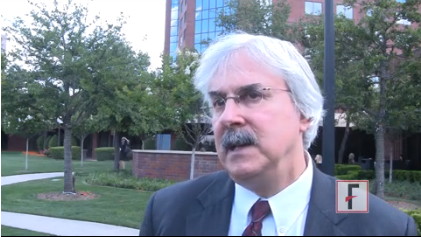User login
DALLAS – Constraint-induced movement therapy – a technique fairly well known for stroke – helps patients with hemiparetic multiple sclerosis, too.
Instead of favoring their good arm, patients are taught to use their affected arm. Once they learn how, the results seem to be self-perpetuating. That might be why Dr. Victor W. Mark and his colleagues at the University of Alabama at Birmingham found that the benefits of even a 10-day course of therapy persist for several years. They also found that constraint-induced movement therapy appears to help restore brain volume lost to MS.
Dr. Mark explained the technique and his findings at a meeting of the Consortium of Multiple Sclerosis Centers and the Americas Committee for Treatment and Research in Multiple Sclerosis.
The video associated with this article is no longer available on this site. Please view all of our videos on the MDedge YouTube channel
DALLAS – Constraint-induced movement therapy – a technique fairly well known for stroke – helps patients with hemiparetic multiple sclerosis, too.
Instead of favoring their good arm, patients are taught to use their affected arm. Once they learn how, the results seem to be self-perpetuating. That might be why Dr. Victor W. Mark and his colleagues at the University of Alabama at Birmingham found that the benefits of even a 10-day course of therapy persist for several years. They also found that constraint-induced movement therapy appears to help restore brain volume lost to MS.
Dr. Mark explained the technique and his findings at a meeting of the Consortium of Multiple Sclerosis Centers and the Americas Committee for Treatment and Research in Multiple Sclerosis.
The video associated with this article is no longer available on this site. Please view all of our videos on the MDedge YouTube channel
DALLAS – Constraint-induced movement therapy – a technique fairly well known for stroke – helps patients with hemiparetic multiple sclerosis, too.
Instead of favoring their good arm, patients are taught to use their affected arm. Once they learn how, the results seem to be self-perpetuating. That might be why Dr. Victor W. Mark and his colleagues at the University of Alabama at Birmingham found that the benefits of even a 10-day course of therapy persist for several years. They also found that constraint-induced movement therapy appears to help restore brain volume lost to MS.
Dr. Mark explained the technique and his findings at a meeting of the Consortium of Multiple Sclerosis Centers and the Americas Committee for Treatment and Research in Multiple Sclerosis.
The video associated with this article is no longer available on this site. Please view all of our videos on the MDedge YouTube channel
AT THE CMSC/ACTRIMS ANNUAL MEETING
